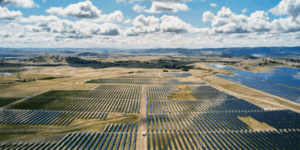Apple on track to make 25% of iPhones in India this year

Local reports claim Apple in India is already generating millions at its stores.
Apple is on track to hit its own targets, rapidly ramping up its iPhone manufacturing capacity in India.
That push means that in recent months the company has built capacity to the extent that now one in five iPhones (20%) are made in India, and this is likely to increase as the tariff/not tariff era intensifies.
This is a super-rapid increase in capacity.
It’s up 60% since this time last year and means Apple is now churning out $22 billion value in iPhones each year, with $17.4b of that being exported elsewhere.
A huge achievement
It’s a huge achievement to scale iPhone manufacturing in India to 20% of the global total from the 0% manufacturing rate it enjoyed in 2018, when the first Wistron (not Tatu) factory went online. This is a significant step on a journey that continues – Apple is currently expected to manufacture 25% of the world’s iPhones in India by the end of the year.
Apple’s iPhones are currently made at three primary factories: two in Tamil Nadu (operated by Foxconn and Tata Group) and one in Karnataka (run by Tata Group). Apple’s downstream suppliers are also setting up shop, with Sunwoda, Foxlink, and Aequs putting factories in place.
India’s IT and Electronics Minister, Ashwini Vaishnaw, recently said that Apple expoerted $17.4 billion value of iPhones in the year ending March 2025. This is likely to have seen a big increase in recent weeks as the company has been sending iPhones by the plane load for sale in the US to beat the tariffs, which eventually seem to hacve been almost but not quite rescinded.
But it took a long time
The fact that it took Apple around seven years to get to the position of building 20% of its iPhone in India from a zero start should also be a salutatory lesson to anyone who thinks production capacity can easily scale into new locations. India has lots of advantages for manufacturing, including a highly literate and skilled population, lots of people, and lots of space.
That wages track lower than in the US also adds to the appeal, as does the significant government subsidies Apple and its partners have enjoyed by dint of locating production there. With all those advantages, the fact it took seven years to reach 20% should be seen as a kind of barometer of the kind of time it would take to relocate production anywhere – with fewer positive advantages it would take longer. Apple has even had to make changes at airports to support its work.
These things don’t, won’t, and can’t happen overnight – thinking they do is just magical thinking.
You can follow me on social media! Join me on BlueSky, LinkedIn, and Mastodon.




